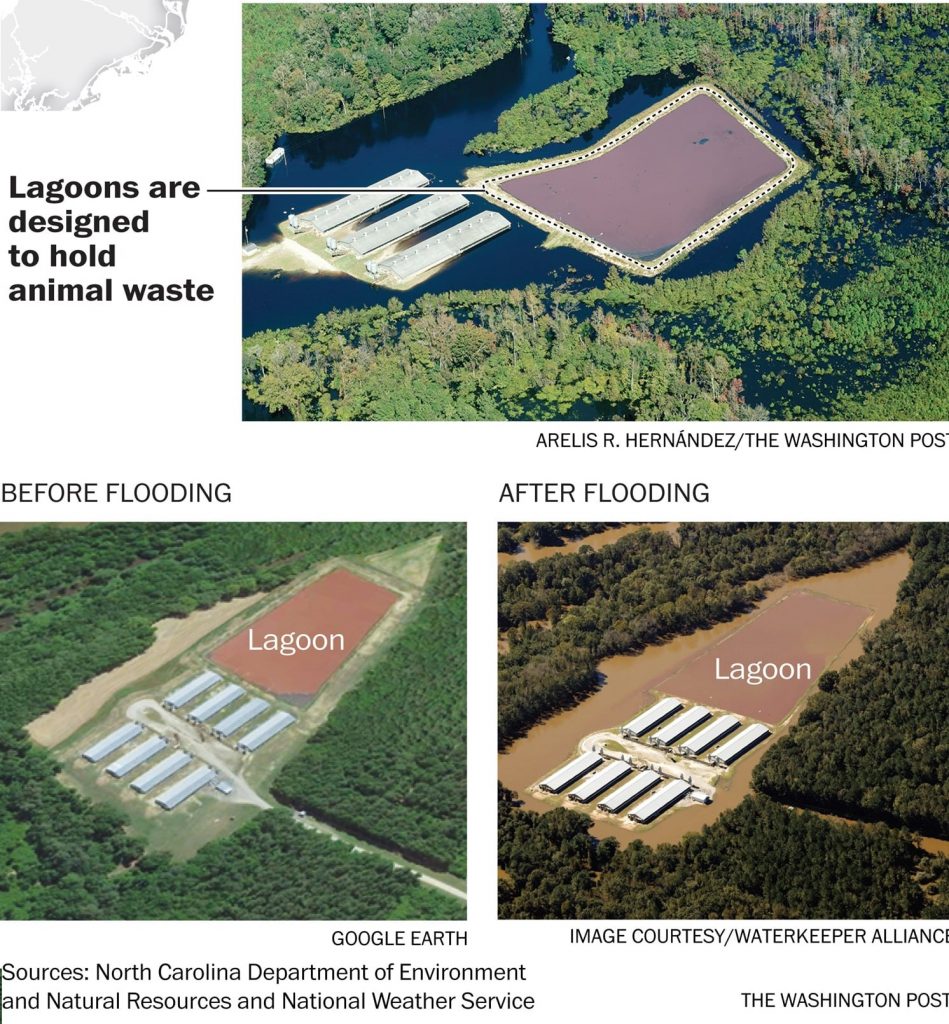You probably have not thought about how much water animal agriculture consumes and wastes. Livestock water includes drinking water for animals, dairy operation, wash down facilities and waste-disposal systems. All of these contribute to the amount of water it takes to grow, raise and butcher the meat and food you prepare for your family.


Crops Grown for Animals Used as Food
In California, Alfalfa is the number one crop grown and is not even farmed for human consumption. The majority of these crops goes into cattle and pork feed. (PSU, 2016)
Fun Fact: We all love a beautiful piece of fruit or vegetable. “Actually, it takes about 3.3 gallons to produces just one tomato! Per ton, vegetable use consumes about 11,300 gallons of water and fruit takes about 38,000 gallons per ton.” (PSU, 2016)
Land Used to Grow Livestock
The problem with agricultural water usage and waste is that livestock and poultry produce a lot more waste. In fact, in 2012 they produced almost 13 times the amount of waste than all 312 million people that live in the US. While human waste goes through a demanding treatment process, animal waste does not and is highly likely to be soaked back into the groundwater, effecting water sources. (FoodPrint, 2020)

“Animal waste is stored in open ponds (called lagoons) or pits and is applied untreated as fertilizer to farm fields… Most lagoons are lined only with clay and can leak, allowing the waste to seep into groundwater” (FoodPrint, 2020).
Also, the larger the livestock farm, the more land is used. “The demand for livestock pasture is a major driver of deforestation. The Food and Agriculture Organization of the United Nations has estimated that 70 percent of land formerly supporting Amazon rainforests has been turned over to grazing” (Factory Farming, 2018).
The Affect These Have on the Environment and Our Water Supply
Our water footprint is significant in both fruit and vegetable agriculture and animal agriculture. Some fruit and vegetables are used as food for animals in addition to providing communities with healthy fresh foods.
Disposing of agricultural water waste without treatment can make wildlife sick and harm people and plants that rely on nearby water sources if the lagoon is used to germinate crops or leaks into the groundwater. Not only do these lagoons consist of waste, they contain chemicals, bedding and hay, and sometimes dead animals. When too much waste is used on fields, the excess will be swept away through runoff processes and end up in larger nearby water sources like streams and rivers, this is known as agriculutal water pollution. (FoodPrint, 2020)


Fun Fact: Did you ever think of how much water it takes to get the slab of steak you are cooking for dinner? Slaughtering one animal takes 132 gallons of water. (PSU, 2016)
“pork production consumes 121,000 gallons of water per ton; beef consumes about 145,000 gallons per ton; and butter consumes about 122,800 gallons per ton” (PSU, 2016).
The animal agriculture leaves even more of a water footprint, ranging from 36-74 trillion gallons of water/year. This takes into consideration the drinking water for animals, wash down facilities, waste-disposal, dairy operations and even the amount of water it takes to grow the food that the animals consume. (PSU, 2016)
Water treatment
Municipal water systems that provide water to homes, businesses and recreational areas go through a treatment process that makes water safe. Although your water is deemed safe to drink, you may consider testing your home water for hard elements or bacteria that can cause harm to you and your family. Consider Aqua Ultraviolet! Our Advanced UV Technologies destroy the DNA/RNA of harmful contaminants and leave you with safe water to use throughout your whole house.
#uvsterilizers #uvsterilizer #water #drinkingwater #cleanwater #safewater #agwater #agriculturalrunoff #aquaultraviolet #aquauv #health #healthy
Sources and Further Readings:
Water Sustainability and Animal Agriculture. Penn State University. (2016). Skf5159. https://sites.psu.edu/skf5159revisedblogs/2016/05/03/water-sustainability-and-animal-agriculture/
Food Print. What Happens to Industrial Agriculture’s Animal Waste? (2020). https://foodprint.org/issues/what-happens-to-animal-waste/?cid=906
Factory Farming. The Environment. (2018). https://springfarmsanctuary.org/facts-the-environment/
